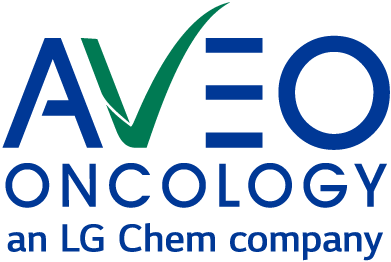April 6, 2009
Breakthrough Preclinical Model for Human Cancer May Dramatically Improve Development of Effective Oncology Drugs; Data Published in PNAS
AVEO Scientists Generate Human Tumors in Mice from Primary Human Breast Tissue; Provides More Realistic Genetic Context in which to Evaluate New Anti-tumor Therapies
CAMBRIDGE, Mass., April 6, 2009 – AVEO Pharmaceuticals, Inc., a biopharmaceutical company leveraging breakthrough discoveries in cancer biology to discover, develop and commercialize targeted oncology therapies, today announced findings from its novel human-in-mouse (HIM) cancer model system, in which AVEO successfully created invasive human tumors from primary human breast tissue that develop over time in mice and mimic human tumor behaviors and response. The findings were published this week in the Early Edition of the Proceedings of the National Academy of Sciences.
More than 95 percent of oncology drugs entering the clinic fail, due in large part to the lack of predictive animal models in the preclinical development phases. AVEO scientists have developed a sophisticated cancer biology platform that provides models of human cancer more relevant than traditional mouse models known as xenografts. In the AVEO HIM model, normal human breast tissue is engineered to express oncogenes and is then introduced into mice where it forms human breast tissue in the mouse mammary microenvironment. The tumors which then develop spontaneously acquire common and distinct mutations during tumor progression. This process results in human tumors in mice that reflect their human counterparts in that they differ slightly from one instance to another, exhibiting natural genetic variation akin to that seen in patients.
“Historically, the xenograft models created to analyze how human cancers behave have not been accurate predictors of human responses to various therapeutic agents,” said Robert A. Weinberg, Ph.D., member, Whitehead Institute and professor of biology, MIT. “In contrast, tumor development in the HIM model proceeds through defined histological stages of hyperplasia, from ductal carcinoma in situ (DCIS) to invasive carcinoma. Moreover, HIM tumors display characteristic responses to a targeted therapy known to be effective in humans, specifically Herceptin. This represents a big step forward in developing xenograft models that will accurately predict patient responses to agents that are in preclinical development. The HIM model is an exciting, experimentally tractable human in vivo system that holds great potential for advancing our basic understanding of cancer biology and for the discovery and testing of targeted therapies.”
By employing a tissue recombinant system and a gene transduction system, researchers assessed the in vivo biological consequences of specific genetic alterations in the reconstituted breast tissue. Introduction of different combinations of oncogenes, such as HER2, KRAS, PI3 kinase and p53, into the tissue enabled the researchers to dissect the contribution of each gene to human tumor formation in the model.
The authors also demonstrated the utility of the HIM models for drug efficacy testing by treating the HER2 driven breast tumors with different HER2 antagonists. The resulting potent inhibition of HIM tumor growth correlates with what has been observed in the clinic.
“With the increasing knowledge of specific genetic alterations in breast cancer, there is now a significant opportunity to correlate activity of anticancer agents with specific genetic alterations in tumors,” added Murray O. Robinson, Ph.D., senior vice president, oncology at AVEO. “Our proprietary models provide a defined genetic context in which to validate cancer gene candidates, determine their biological roles in various stages of cancer progression and test targeted therapies. We have been very encouraged by the similarity to human patients in response to widely used breast cancer agents.”
The study, entitled “Dissecting genetic requirements of human breast tumorigenesis in a tissue transgenic model of human breast cancer in mice” by Min Wu et al, is available online in this week’s Early Edition of PNAS at www.PNAS.org.
AVEO’s Proprietary Human Tissue Transgenic HIM Model
AVEO sought to generate an in vivo model of human breast cancer in mice (HIM) by employing a unique tissue recombinant system comprised of human breast stromal cells and epithelial organoids engineered with defined transgenes. Depending on the combination of transgenes employed, the reconstituted human breast tissue developed into preneoplastic lesions (Carcinoma In Situ or CIS) or to invasive adenocarcinomas. Importantly, despite using the same set of genetic alterations, significant variation in tumor phenotype was observed among tumors depending on the source of donor organoids. This last observation suggests that differences in the genetic makeup individual donors may influence the development and progression of these tissue transgenic breast tumors. Because this observed variation is similar to what is seen across human breast cancer patients, AVEO is generating a large number of individual tissue transgenic breast tumors to create a population of tumors in which to explore the relationship between this variation and response to anti-cancer agents.
About AVEO
AVEO is a late-stage biopharmaceutical company focused on the discovery and development of novel, targeted cancer therapeutics. AVEO’s proprietary, integrated cancer biology platform enables the company to pursue highly efficient drug development strategies in oncology that increase the probability of clinical success and provides a discovery engine for high-value targets. This approach has resulted in a balanced pipeline of novel cancer therapies focused on well-validated targets (VEGFR, EGFR) and promising novel targets (HGF, FGFR, ErbB3), as well as collaborations with Eli Lilly, Merck, OSI Pharmaceuticals, Schering-Plough and Biogen Idec. The company’s lead product, AV-951, a potential best-in-class triple VEGF receptor inhibitor, is completing Phase 2 clinical development in patients with metastatic renal cell cancer and is expected to enter Phase 3 development in 2009. Through a combination of internal drug discovery and selective in-licensing of targeted therapeutics, AVEO is building a diversified product pipeline and moving toward its vision of becoming a fully integrated biopharmaceutical company. For more information, please visit the company’s website at www.aveopharma.com.
